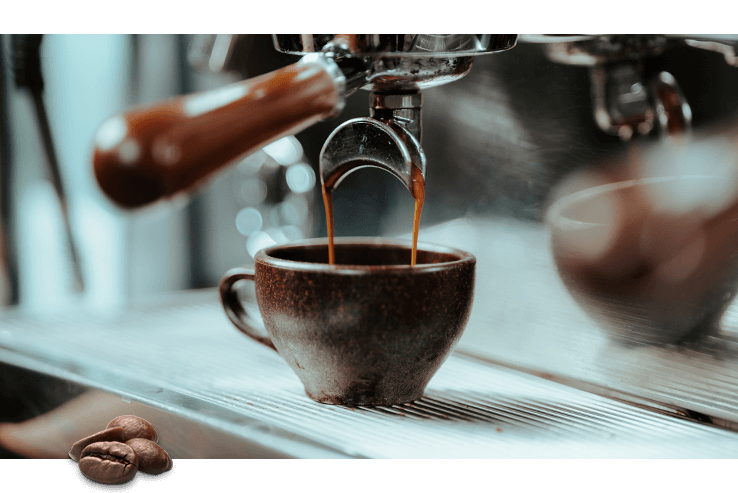Where to Buy Genuine SOE Single Origin Espresso Online
Where to Buy Genuine SOE Single Origin Espresso Online
Blog Article
Coffee Beans Uncovered: Uncovering the Keys of Coffee and Blended Coffee Beans
When you believe about coffee, what comes to mind? Is it the rich aroma of espresso or the complexity of a well-crafted blend? Understanding the nuances of coffee beans can transform your experience.
The Beginnings of Coffee: A Historic Point Of View
Although espresso is currently a staple in coffee society worldwide, its beginnings map back to the very early 20th century in Italy. In 1901, Luigi Bezzera patented the very first coffee device, intending to make coffee faster than typical approaches.
Understanding Coffee Beans: Features and ranges
When you think of coffee, it's vital to recognize the various bean ranges and their unique flavors. Each type brings a distinct personality to your mug, influenced by factors like roast levels. Recognizing these elements can elevate your coffee experience significantly.
Coffee Bean Varieties
As you discover the world of espresso, you'll promptly uncover that not all beans are produced equivalent; each selection brings its very own one-of-a-kind flavors and features to your mug. The most prominent types consist of Arabica and Robusta. Arabica beans are understood for their smooth, nuanced tastes and lower high levels of caffeine content, making them a favorite amongst coffee lovers. On the other hand, Robusta beans load a more powerful strike with higher high levels of caffeine and an extra bitter taste, frequently preferred in blends for their crema-enhancing qualities. You might also experience specialized beans like Liberica and Excelsa, which offer distinctive accounts and are much less usual. Each range uses something various, so exploring will help you locate your best coffee.
Taste Profiles Clarified
Recognizing the flavor profiles of different coffee beans can raise your coffee experience. Each bean selection uses one-of-a-kind qualities that affect mouthfeel, fragrance, and taste. Arabica beans typically offer a sweeter, extra complicated taste with tips of fruit and flower notes, while Robusta beans tend to be bolder, with natural and nutty undertones.
When you discover single-origin beans, you could discover distinct regional tastes-- Main American beans may be brilliant and citrusy, whereas Italian blends typically supply rich, chocolatey notes.
Roast Levels Impact
Roast degrees play an essential duty in shaping the flavor and scent of coffee beans, affecting your general coffee experience. Understanding these roast degrees aids you choose the coffee that suits your taste choices. Experimenting with various roasts can lead to wonderful discoveries, enhancing your admiration for coffee.
The Art of Mixing: What Makes Blended Coffee Special
What makes combined coffee so interesting? You can experiment with numerous mixes to enhance body, acidity, and sweetness, resulting in a mixture that's richer and a lot more complicated than a single-origin coffee.
And also, mixing can aid maintain consistency, offering a dependable flavor experience no matter of seasonal variants in beans. Whether you're a barista or a home maker, understanding the art of mixing opens up a world of creativity and flavor opportunities, making your coffee experience really one-of-a-kind.
Taste Profiles: Tasting Notes of Espresso vs. Blended Coffee
Combined coffee offers a world of taste possibilities, but when it involves espresso, you're checking out a more focused experience. Espresso typically showcases bold, abundant flavors with a thicker mouthfeel. You could see notes of dark delicious chocolate, caramel, or also tips of fruit, relying on the beans. The intensity can be both stimulating and pleasing.
On the other hand, combined coffee presents a complicated tapestry of flavors. You can check out a variety of tasting notes, from nutty and pleasant to flower and fruity. Each blend can use something unique, commonly incorporating beans from different areas to create a well balanced profile.
While espresso provides a punch, combined coffee invites you to appreciate the nuances. Whether you prefer the robust toughness of espresso or the intricate tastes of blended coffee, each mug informs its own story, waiting for you to uncover.
Developing Techniques: Developing Your Coffee Shot
To accomplish the best coffee shot, recognizing the brewing techniques is crucial, as also small changes can substantially affect the flavor and quality. Begin by making use of fresh, top notch coffee beans; grind them right before brewing for maximum taste. Goal for a fine work, regarding the uniformity of salt, to assure suitable extraction.
Next, focus on your water temperature; it needs to be in between 195 ° F to 205 ° F. Too warm or too cool can ruin your shot. Use about 18-20 grams of coffee for a double shot, and tamp it equally with strong stress to develop an uniform puck.
A longer removal can lead to resentment, while also brief can result in sour flavors. Practice these techniques constantly, and you'll fine-tune your abilities, achieving that rich, robust espresso shot you yearn for.
The Function of Roast Levels in Coffee and Blended Coffee
After grasping the brewing techniques for espresso, it's time to consider just how roast degrees influence the taste profile of your coffee. Light roasts tend to highlight the coffee's beginning, providing bright acidity and fruity notes, while tool roasts balance level of acidity and sweet taste, creating a well-shaped flavor.

Checking Out Sustainability: Ethical Sourcing of Coffee Beans
When you choose coffee, you're not just picking a flavor; you're making a choice about the impact on farmers and the environment. Understanding Fair Trade methods, natural farming approaches, and certification criteria can assist you support lasting coffee sourcing. Allow's explore just how these factors add to a much more honest coffee experience.
Fair Trade Practices
Fair Profession techniques play a necessary function in making certain that coffee beans are sourced morally and sustainably. When you choose Fair Profession coffee, you sustain farmers who get reasonable wages and work in secure conditions. This commitment to moral sourcing aids fight hardship and advertises community development in coffee-growing areas. You'll find that Fair Trade accreditation likewise encourages ecologically friendly farming practices, as producers are incentivized to secure their land and resources. By opting for Fair Trade brand names, you're not just delighting in an abundant cup of coffee; you're making a favorable effect on the lives of those who expand it. Your choice matters, and it links you to a global motion concentrated on fairness and sustainability in the coffee industry.
Chemical-free Farming Approaches
As you check out the globe of moral coffee sourcing, organic farming approaches arise as a crucial component of sustainability. Additionally, it typically leads to stronger, much healthier coffee plants, resulting in richer flavors in your cup. When you decide for natural coffee, you're making a mindful option that benefits both the world and your taste.
Qualification Standards Explained
Recognizing certification criteria is vital for any individual curious about fairly sourced coffee. These standards, such as Fair Trade, Rainforest Alliance, and USDA Organic, warranty that coffee is expanded under lasting practices. You support farmers that adhere to moral labor practices and environmental security. when you choose certified coffee.
Fair Trade accreditation concentrates on offering fair wages and functioning problems, while Jungle Alliance stresses biodiversity and environment conservation. Following time you're at your local café or grocery store, look for these tags, and really feel excellent understanding your coffee acquisition positively affects areas and the environment.
Regularly Asked Inquiries


How Does Altitude Affect the Development of Coffee Beans?
Elevation influences coffee bean development by affecting temperature level and climate. Greater altitudes usually produce denser beans with even more facility flavors, while lower elevations SOE can lead to faster growth yet less flavorful results. You'll taste the distinction!
What's the Difference Between Arabica and Robusta Beans?
Arabica beans are sweeter and a lot more complex, while Robusta beans have a stronger, harsher taste with greater caffeine material. You'll discover Arabica preferred for specialized coffees, whereas Robusta's commonly utilized in instantaneous coffee and espresso blends.
Can Coffee Beans Spoil or Lose Flavor In Time?
Yes, coffee beans can go poor and shed taste gradually. If you store them incorrectly or keep them too long, they'll wither. Always maintain your beans in an airtight container away from light and moisture.
What Are the Health Benefits of Drinking Coffee?
Consuming coffee boosts your power, improves mental quality, and may reduce the risk of certain illness. It's rich in anti-oxidants, supports metabolic rate, and can enhance mood, making it a helpful choice for your day-to-day regimen.
Exactly How Does Water Quality Impact Coffee Removal?
Water high quality significantly influences coffee removal. It influences the solubility of flavors and oils, affecting taste and aroma. Making use of filtered water can boost your coffee, guaranteeing a delightful and balanced mug every single time you brew.
Coffee Beans Uncovered: Uncovering the Keys of Espresso and Blended Coffee Beans.
Comprehending the flavor profiles of different espresso beans can boost your coffee experience.Roast levels play an important role in shaping the taste and scent of espresso beans, influencing your general coffee experience (SOE).Mixed coffee provides a world of flavor possibilities, yet when it comes to coffee, you're looking at a much more concentrated experience.After grasping the developing strategies for coffee, it's time to ponder exactly how roast levels influence the flavor profile of your coffee
Report this page